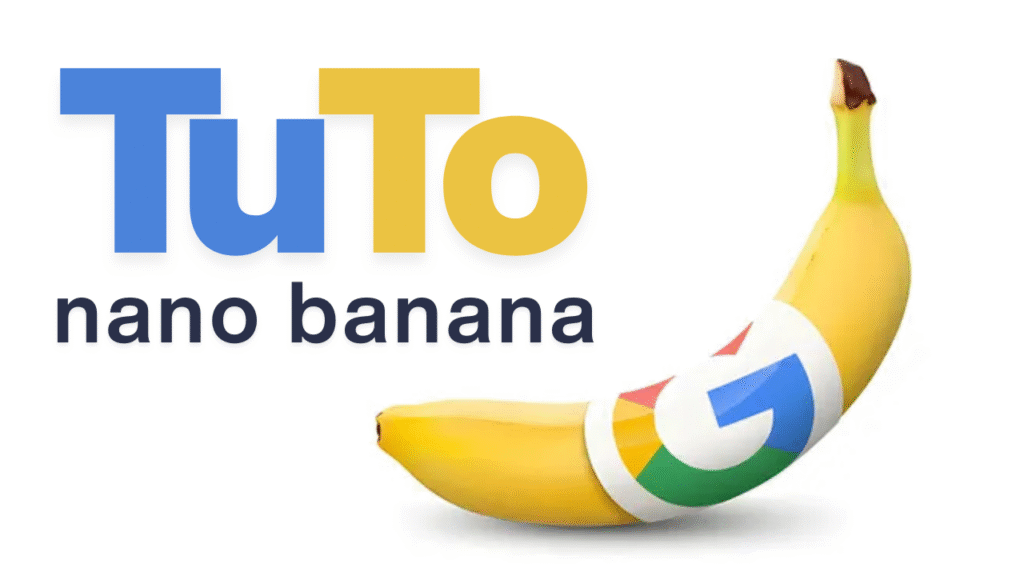Introduction: Discovering Google Flash (Nano Banana) and Why It Matters in 2025
Google Flash, nicknamed Nano Banana, is Google’s breakthrough AI image generator released in 2025, redefining how creatives, marketers, educators, and tech enthusiasts bring ideas to life visually. Unlike traditional graphic design software or earlier AI tools, Google Flash leverages cutting-edge generative AI with unmatched speed, integration, and prompt flexibility designed for today’s fast-paced content ecosystem.
Why does Google Flash matter in 2025? The digital world craves authentic, unique visual content at scale. Google Flash offers lightning-fast generation of highly detailed and stylistically versatile images from simple text prompts, empowering users at every skill level to create professional-grade visuals instantly. It integrates seamlessly with Google’s ecosystem, making it a game-changer in workflows involving Google Workspace and cloud collaboration.
This tutorial dives deep into mastering Google Flash, guiding you step-by-step—from accessing the platform to crafting your first stunning image, all while sharing best practices, practical examples, and expert insights to harness its full potential.
Key Features and Benefits of Google Flash Compared to Other AI Image Generators
Google Flash Nano Banana stands out by combining Google’s AI research expertise with user-centric design. Here’s a breakdown of its key features and how it compares:
Cutting-Edge Image Quality and Creativity
- Produces high-resolution, photorealistic or stylized images.
- Supports various artistic styles, from impressionism to cyberpunk.
- Balances creativity with precise control over output details.
Fast and Efficient Performance
- Real-time image generation, often under 5 seconds.
- Lightweight interface optimized for browsers and mobile devices.
- Enables rapid iteration on prompts.
Deep Integration with Google Ecosystem
- Works effortlessly within Google Workspace apps.
- Easy cloud storage and sharing options.
- Synchronizes with Google accounts for personalized settings.
User-Friendly Interface and Powerful Customization
- Intuitive UI tailored for beginners.
- Advanced options for expert users (e.g., style modifiers, aspect ratios).
- Visual history and prompt tracking for workflow management.
Comparison with Popular AI Tools
| Feature | Google Flash (Nano Banana) | MidJourney | DALL·E | Stable Diffusion |
|---|---|---|---|---|
| Image Quality | High, customizable | Artistic and painterly | Creative, diverse styles | Highly flexible, open-source |
| Speed | Instantaneous (under 5 sec) | Moderate (up to 1 min) | Fast (~15-30 sec) | Variable, slower |
| Ease of Use | Beginner-friendly | Community-driven, less UI | User-friendly, web-based | Requires setup, coding knowledge |
| Integration | Google Workspace | Discord and third-party apps | Web and API | Open-source platforms |
| Pricing | Freemium + Google services | Subscription-based | Freemium | Free / open-source |
Google Flash uniquely blends speed, accessibility, and integration that make it especially compelling for professionals deeply embedded in Google’s productivity ecosystem.
How to Access Google Flash: Step-by-Step Guide
Getting started with Google Flash is quick and straightforward. Here’s your step-by-step path:
Prerequisites
- Active Google account (Gmail or Workspace).
- Compatible device: laptop, desktop, or mobile with a modern browser.
- Stable internet connection.
Step 1: Navigate to the Google Flash Portal
Open your preferred browser and go to the official Google Flash website or access it via Google Workspace apps.
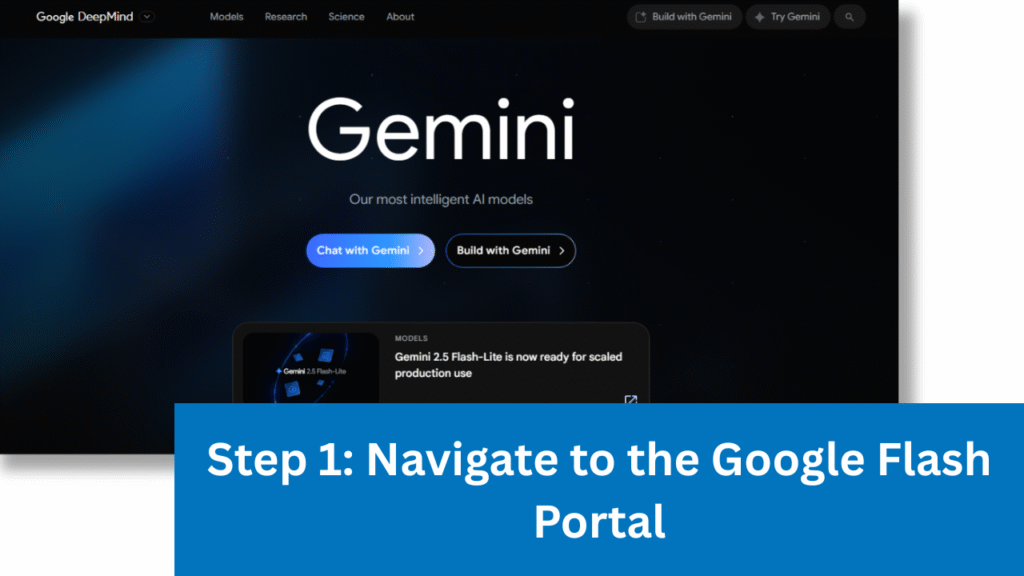
Step 2: Sign In
Use your Google account credentials to sign in securely. This will sync your account settings and storage.

Step 3: Initial Setup and Permissions
Grant permissions requested for storage and access to Google Drive if prompted. Adjust your user preferences.
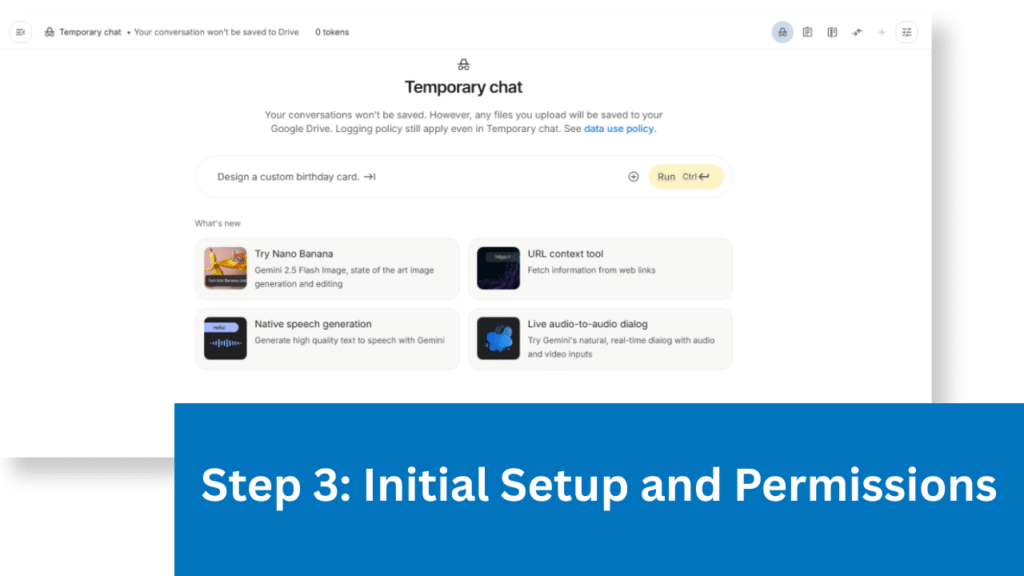
Step 4: Explore the Dashboard
Familiarize yourself with the dashboard: prompt input box, style presets, history panel, and export options.
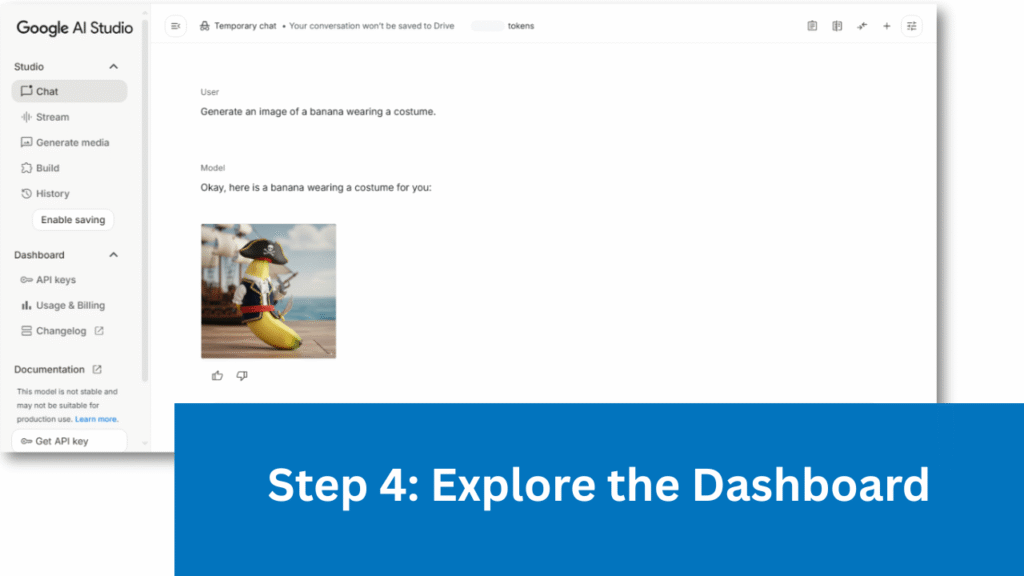
Troubleshooting Access
- Ensure your Google account is active and has proper permissions.
- Clear browser cache or try incognito mode if loading issues persist.
- Check for platform maintenance announcements.
How to Create Your First Image with Google Flash: A Detailed Tutorial
Let’s create your first AI-generated image using Google Flash, step by step.
Understanding Prompts and Inputs
Google Flash uses natural language prompts — you describe what you want, and the AI visualizes it. Clarity and creativity in prompts are key.
Step 1: Write Your First Prompt
Example prompt: “A serene sunset over a futuristic cityscape, in the style of cyberpunk, vivid neon colors.”
Enter this in the prompt box.

Step 2: Choose Style and Parameters
Select from style presets like photorealistic, painterly, or abstract. Adjust resolution and aspect ratio if needed.
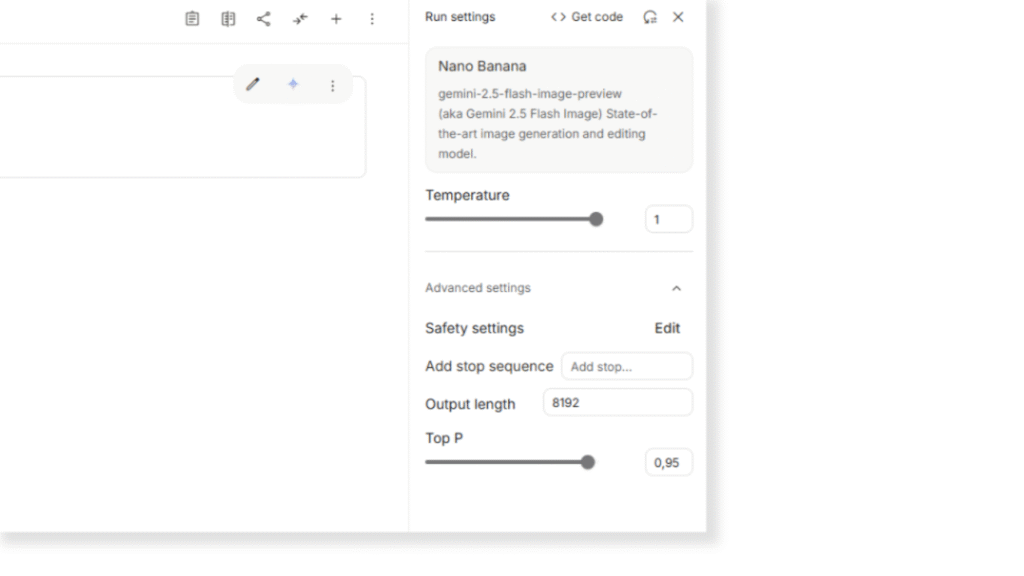
Step 3: Generate Image
Click the “Create” button. Watch Google Flash render your image in seconds.

Step 4: Review and Download
Inspect the generated image. Use options to save, download (JPEG/PNG), or regenerate with tweaks.
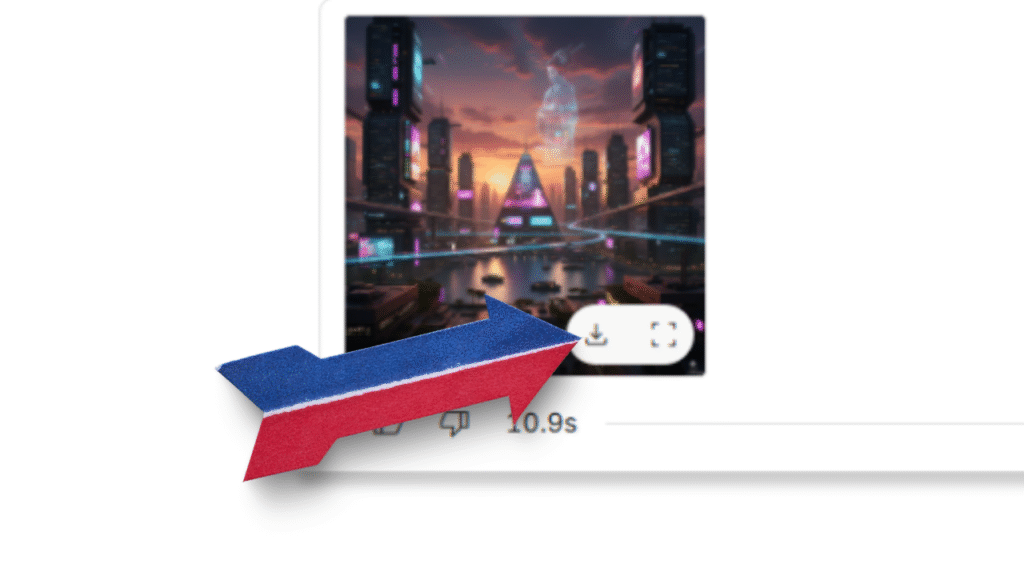
Example Prompt Results:
- Prompt: “A futuristic astronaut with neon lights in a dark space station”
Expected Result: Vivid, high-contrast image with sci-fi aesthetics, glowing details, and sharp facial features. - Prompt: “A cozy mountain cabin in autumn, watercolor style”
Expected Result: Soft colors and brush strokes resembling a traditional watercolor painting with autumn foliage.
Best Practices: You Should Do vs. You Shouldn’t Do with Google Flash Prompts
You Should Do:
- Use specific, descriptive language for detail and focus.
- Experiment with style modifiers to discover preferred aesthetics.
- Keep prompts within 1-3 concise sentences to avoid ambiguity.
- Save successful prompts for reuse and modification.
- Review generated images and iterate prompts for improvement.
You Shouldn’t Do:
- Avoid vague prompts such as “nice picture”; be descriptive.
- Don’t overload prompts with conflicting instructions.
- Steer clear of copyrighted or inappropriate content.
- Avoid ignoring prompt feedback or settling on first results only.
Real Example Prompts and Their Generated Results
- Prompt: “A surreal cityscape at sunset, cyberpunk style with glowing neon signs.”
Result: A vibrant urban skyline saturated with pink, purple, and blue neon hues, futuristic architecture, reflections. - Prompt: “Portrait of an ancient warrior, detailed armor, stoic expression, oil painting style.”
Result: Rich textures resembling classic oil paintings, intricate armor details, moody lighting highlights. - Prompt: “Abstract shapes in bright colors with dramatic shadows and 3D effect.”
Result: Bold geometric forms with contrasting shadows and dynamic depth, evoking modern art. - Prompt: “A fantasy dragon soaring above mountains in pastel watercolor.”
Result: Soft blend of pastel colors and watercolor washes, elegant dragon wings, dreamy mountain background. - Prompt: “Minimalist workspace with laptop, coffee, and cactus on wooden desk.”
Result: Clean, simple composition, natural textures, bright soft lighting, modern minimalist vibe.
Who Can Benefit Most from Google Flash?
- Editors and Content Creators: Quickly generate custom visuals for articles and posts.
- Digital Marketers: Create engaging campaign graphics with effortless iterations.
- Graphic Designers and Illustrators: Use as a creative assistant or brainstorming tool.
- Social Media Managers: Produce trendy images tailored to platform aesthetics.
- Beginners and AI Enthusiasts: Accessible entry to AI-generated art without technical jargon.
- Educators and Students: Visual aid creation for lessons, presentations, and projects.
Pros and Cons of Google Flash (Nano Banana)
| Pros | Cons |
|---|---|
| Fast, high-quality image generation under 5 seconds | Requires Google account to use |
| Intuitive and clean interface suitable for beginners | Limited advanced editing beyond AI generation |
| Strong integration with Google Workspace tools | May occasionally produce results requiring iteration |
| Flexible prompt system supports diverse styles | Focused mainly on text-to-image, no video generation yet |
| Cloud-based with easy sharing and storage | Some features behind premium tier or subscription |
Comparing Google Flash to Other Major AI Image Generators
MidJourney
- Community-driven with emphasis on artistic, painterly styles.
- Slower generation but excellent for unique, intricate art.
DALL·E
- Open and versatile tool known for creativity and surrealistic imagery.
- Slightly slower but lots of prompt creativity spots.
Stable Diffusion
- Open-source and highly customizable.
- Requires technical know-how, less user-friendly UI.
Google Flash Edge
- Best for integration with Google products.
- Fastest turnaround time with real-time editing feedback.
FAQ: Answers to Your Google Flash (Nano Banana) Questions
- Is Google Flash free or paid?
Google Flash offers a freemium model. Free tier allows limited daily usage, premium unlocks higher resolution and additional features. - What devices support Google Flash?
Supported on desktops, laptops, tablets, and smartphones with modern browsers (Chrome, Edge, Firefox). - How do I improve my prompts?
Use clear, concise, and descriptive text, including style, color, mood, and composition details. Avoid ambiguity. - Can I use Google Flash-generated images commercially?
Yes, Google permits commercial use, but users must respect ethical guidelines and copyright restrictions. - What formats can I export images in?
JPEG and PNG are supported with options for different resolutions. - Does Google Flash have collaboration features?
Integration with Google Drive and Workspace allows sharing and collaborative editing workflows. - Is my data and privacy safe?
Google Flash adheres to strict Google privacy policies, ensuring user data protection and content ownership. - Can Google Flash generate animations or 3D models?
Currently, Google Flash focuses on 2D image generation. Future expansions may include other media types. - How often is Google Flash updated?
Google regularly updates Flash with improved models, UI enhancements, and new features based on user feedback.
The Future of Google Flash and AI Image Generation
Google Flash is positioned to evolve rapidly as AI technology advances. Upcoming features expected include:
- Enhanced style transfer and editing capabilities directly in platform.
- Support for video and 3D content generation.
- Deeper AI personalization based on user preferences and context.
- Expanded API integration allowing developers to embed functionality.
- Greater accessibility features for diverse users globally.
As AI image generators reshape visual content creation, Google Flash is set to lead with innovation, seamless workflows, and democratized creativity.
Conclusion: Take Your Creativity to the Next Level with Google Flash Today
Google Flash (Nano Banana) combines speed, quality, and intuitive design into a powerful AI image generator tailored for both novices and professionals. By following this tutorial, anyone can harness Google’s latest AI to generate unique, stunning visuals in minutes.
Ready to start? Sign into Google Flash now, write your first prompt, and unlock the future of AI-powered creativity. Share your creations, experiment boldly, and integrate effortlessly into your projects and workflows.
Try Google Flash today and transform your visual storytelling!
